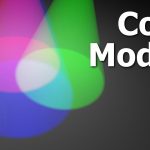Component Video
Component video is a video signal that has been split into two or more component channels. In popular use, it refers to a type of component analog video (CAV) information that is transmitted or stored as three separate signals. Component video can be contrasted with composite video (NTSC, PAL or SECAM) in which all the video information is combined into a single line – level signal that is used in analog television. Like composite, component – video cables do not carry audio and are often paired with audio cables.
When used without any other qualifications the term component video generally refers to analog YPBPR component video with sync on luma.
Composite Video
Composite video (1 channel) is an analog video transmission (no audio) that carries standard definition video typically at 480i or 576i resolution. Video information is encoded on one channel in contrast with slightly higher quality S – video (2 channel), and even higher quality component video (3 channels).
Composite video is usually in standard formats such as NTSC, PAL, and SECAM and is often designated by the CVBS initialism, meaning “Color, Video, Blanking, and Sync.”
S – Video
Separate Video (2 channel), more commonly known as S – Video and Y/C, is an analog video transmission (no audio) that carries standard definition video typically at 480i or 576i resolution. Video information is encoded on two channels: luma (luminance, intensity, “Y”) and chroma (colour, “C”). This separation is in contrast with slightly lower quality composite video (1 channel) and higher quality component video (3 channels). It’s often referred to by JVC (who introduced the DIN – connector pictured) as both an S – VHS connector and as Super Video.
The four – pin mini – DIN connector (shown at right) is the most common of several S – Video connector types. Other connector variants include seven – pin locking “dub” connectors used on many professional S – VHS machines, and dual “Y” and “C” BNC connectors, often used for S – Video patch panels. Early Y/C video monitors often used phono (RCA connector) that were switchable between Y/C and composite video input. Though the connectors are different, the Y/C signals for all types are compatible.


